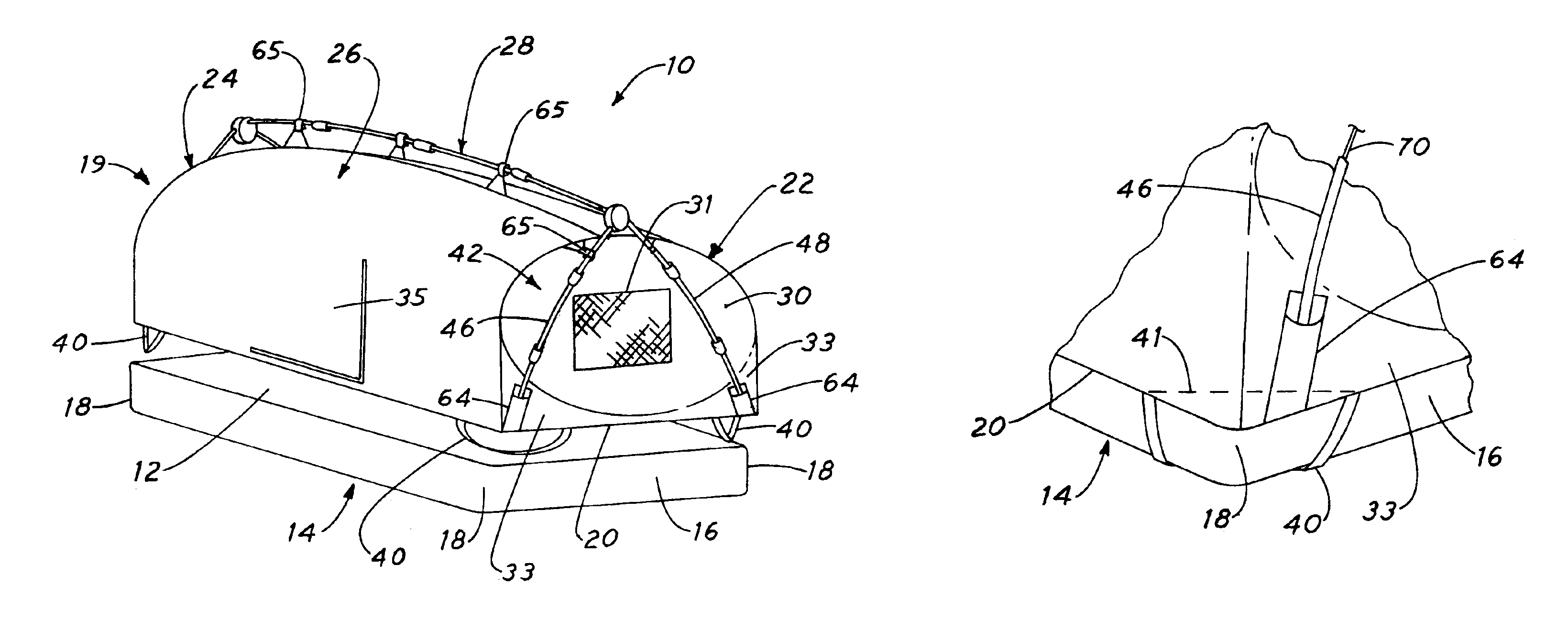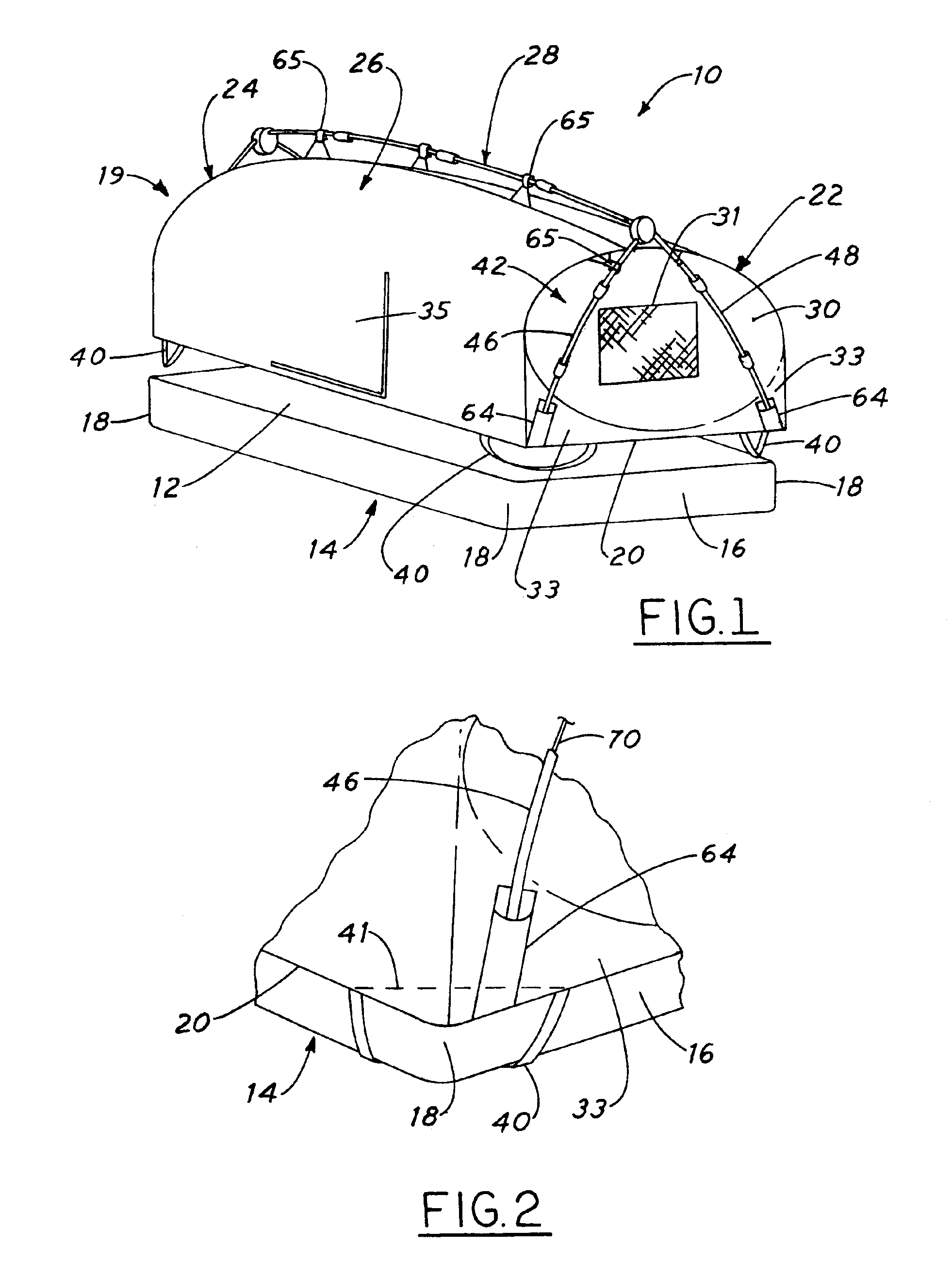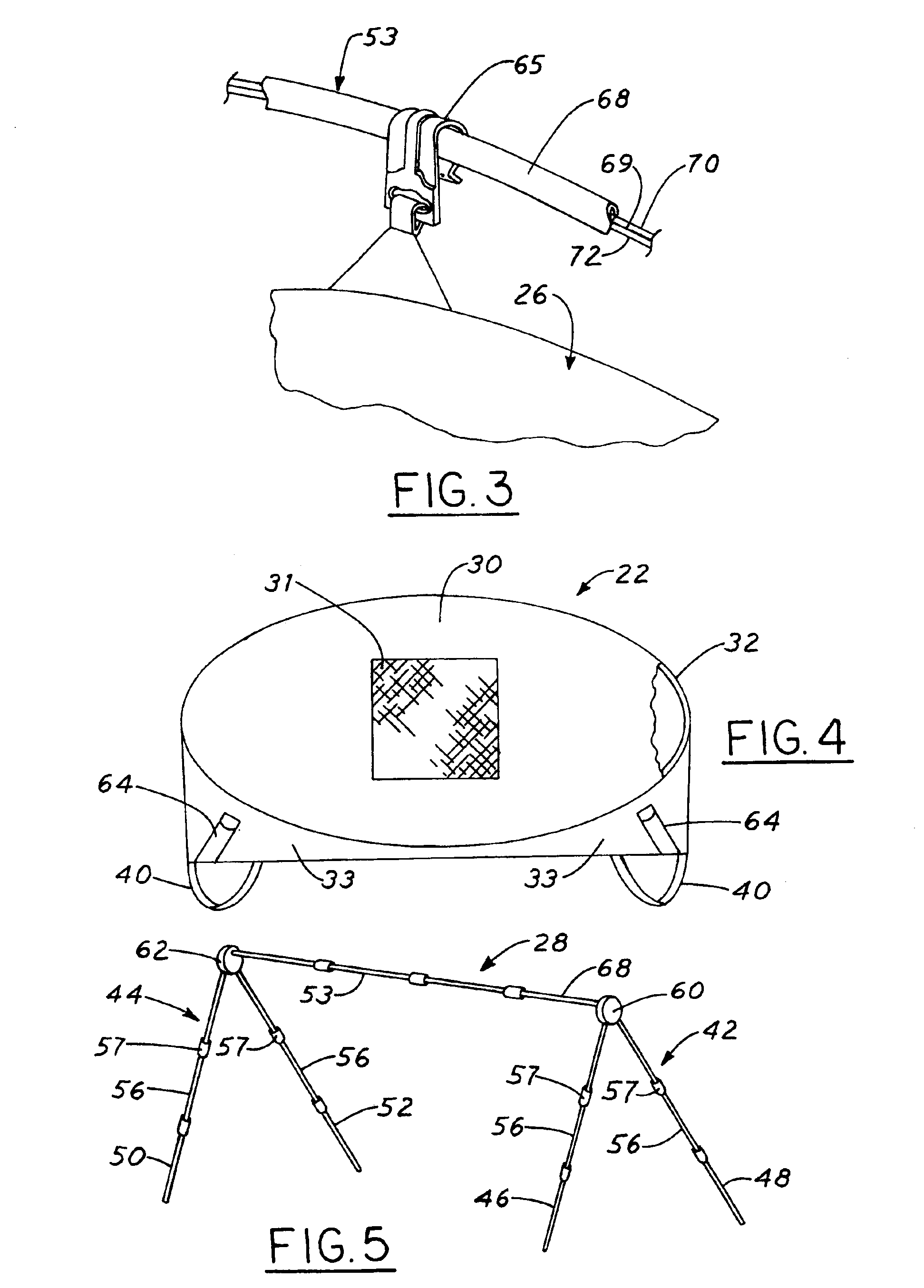Bed-tent
a technology for beds and beds, applied in the field of beds, can solve the problems of unrecognizable finished set-up shape, unforgiving process, and parents generally will not tolerate difficult or time-consuming assembly of toy products, so as to reduce the possibility of parts loss, reduce the impact, and increase the speed of erecting
- Summary
- Abstract
- Description
- Claims
- Application Information
AI Technical Summary
Benefits of technology
Problems solved by technology
Method used
Image
Examples
Embodiment Construction
[0047]Referring now more particularly to the drawings, and especially FIGS. 1 and 2, there is shown a bed-tent 10 for sheltering at least one person. The bed-tent 10 is shown disposed over the top surface 12 of a mattress 14 of a bed, prior to being mounted thereon. The mattress 14 is preferably of the usual rectangular shape, having a peripheral edge 16 and four corners 18. The bed-tent 10 is intended to be occupied by one child, although more than one child may occupy the bed-tent if desired and if permitted by a supervising adult.
[0048]The bed-tent 10 comprises a canopy 19 having an open base 20 generally co-extensive with the peripheral edge 16 of the mattress. The canopy has end panels 22 and 24, and a flexible fabric cover 26. A supporting frame 28 holds the end panels in longitudinally spaced, generally upright position.
[0049]The end panels 22 and 24 are preferably of identical construction, each comprising a sheet 30 of substantially non-stretchable flexible fabric and a fra...
PUM
 Login to View More
Login to View More Abstract
Description
Claims
Application Information
 Login to View More
Login to View More - R&D
- Intellectual Property
- Life Sciences
- Materials
- Tech Scout
- Unparalleled Data Quality
- Higher Quality Content
- 60% Fewer Hallucinations
Browse by: Latest US Patents, China's latest patents, Technical Efficacy Thesaurus, Application Domain, Technology Topic, Popular Technical Reports.
© 2025 PatSnap. All rights reserved.Legal|Privacy policy|Modern Slavery Act Transparency Statement|Sitemap|About US| Contact US: help@patsnap.com



